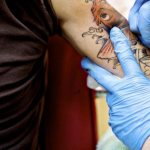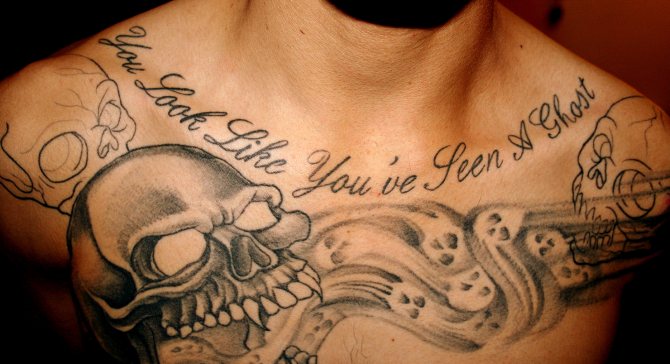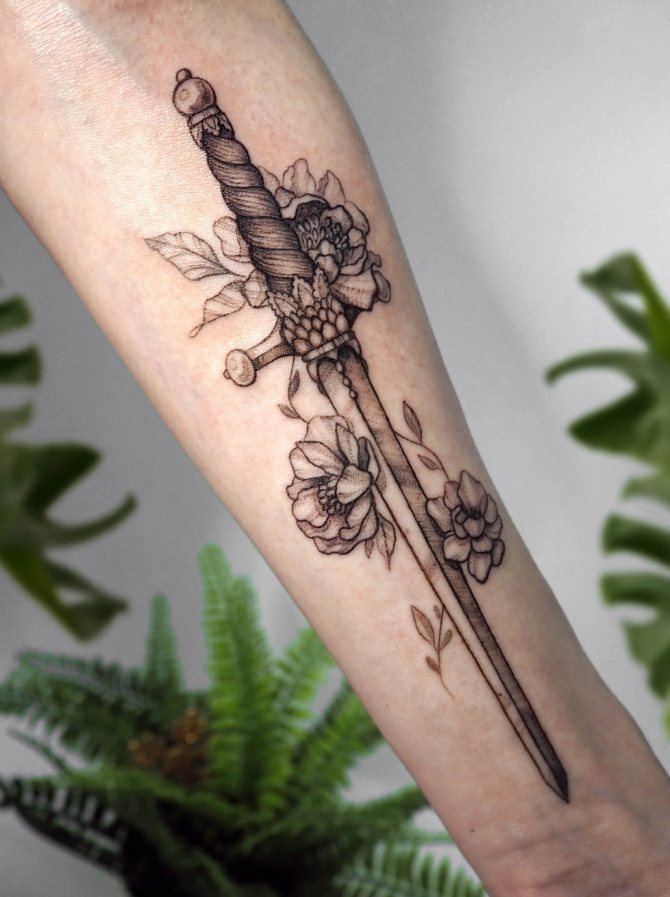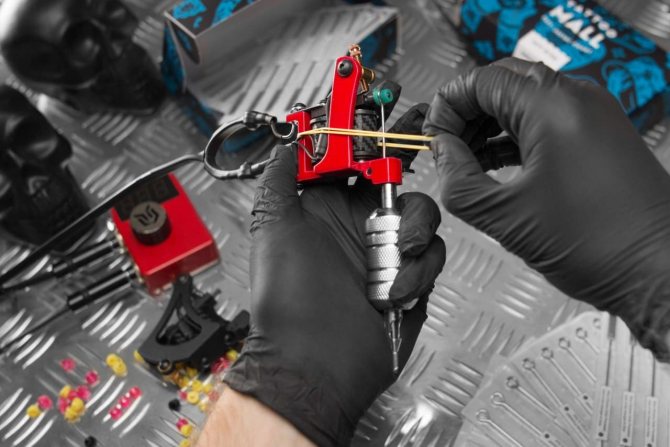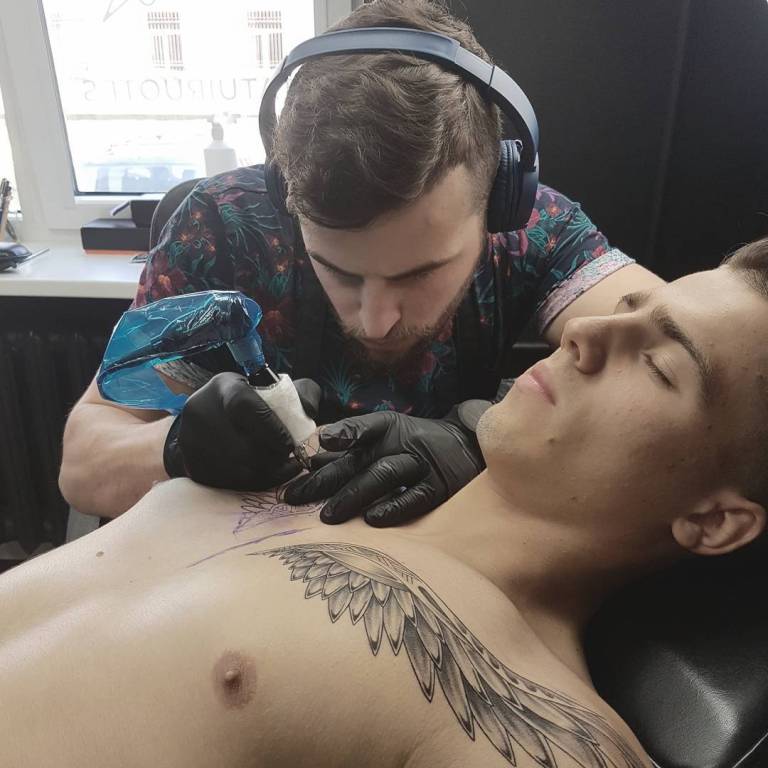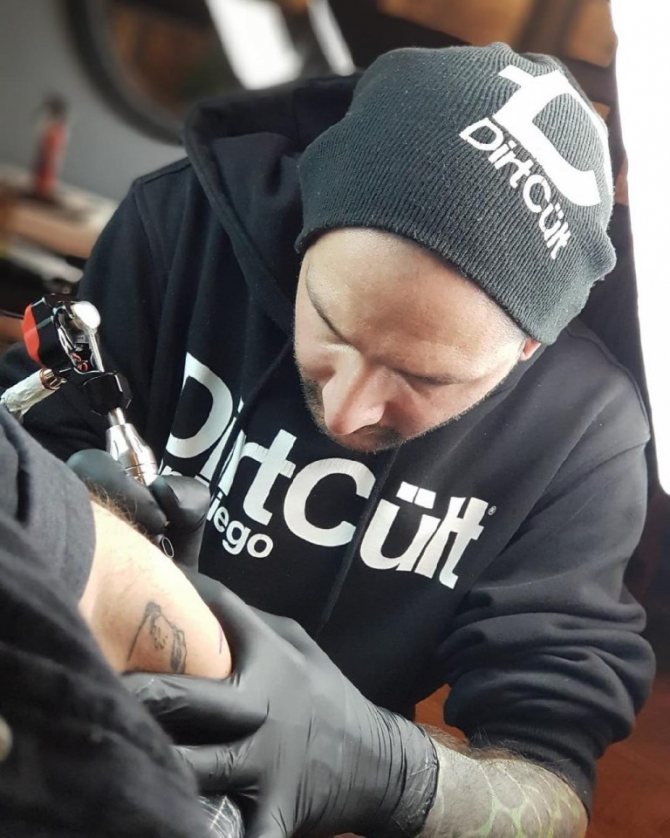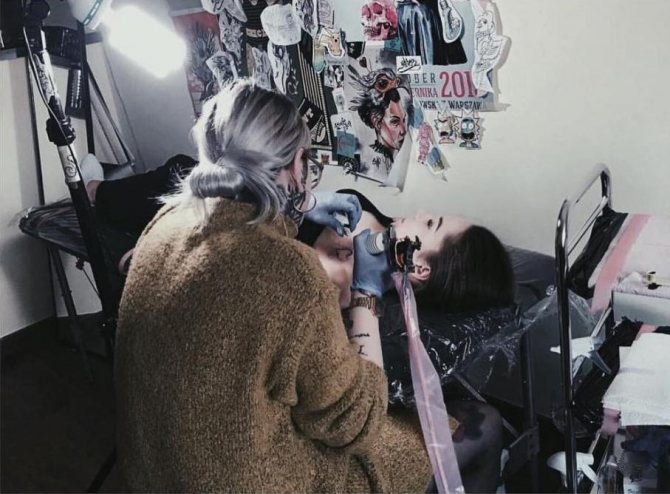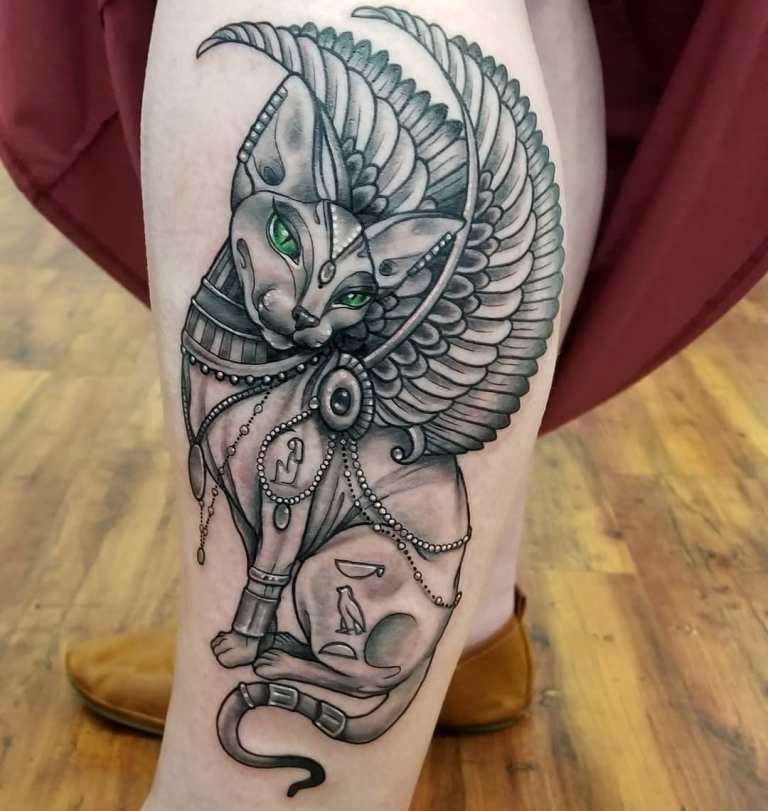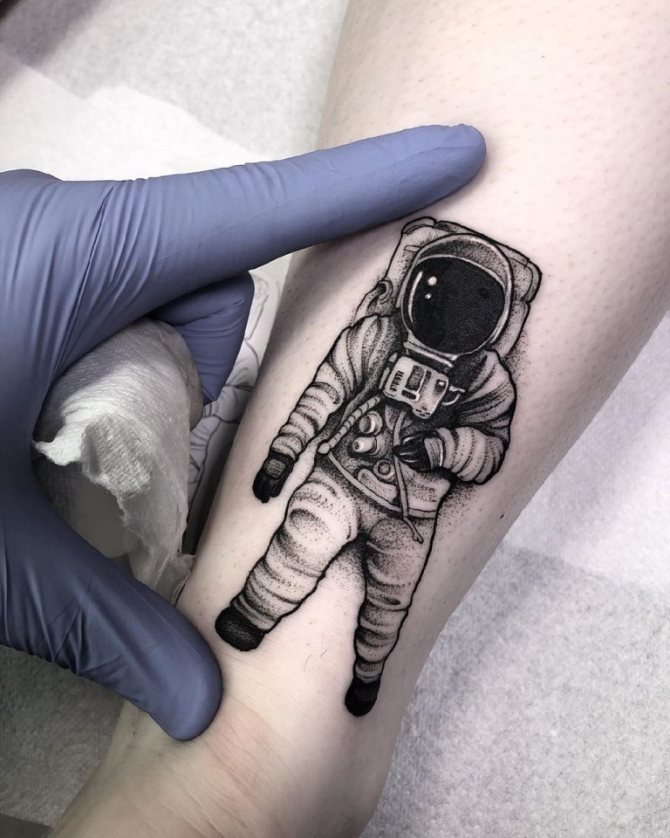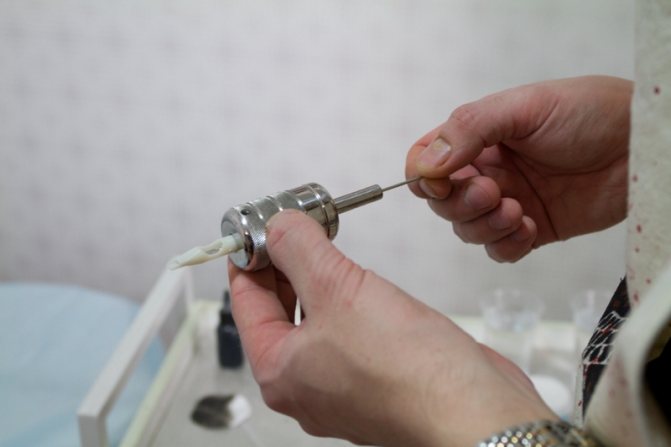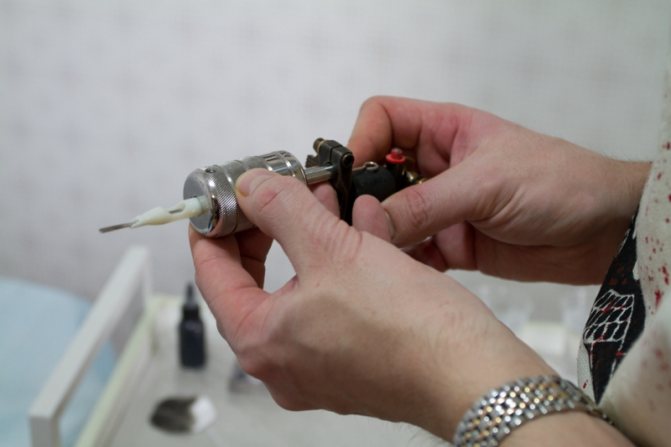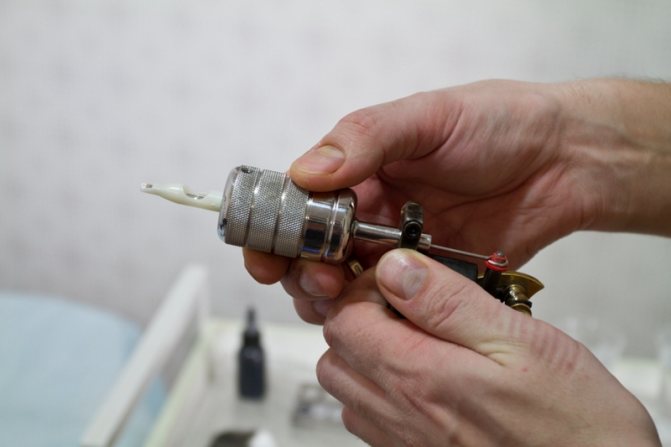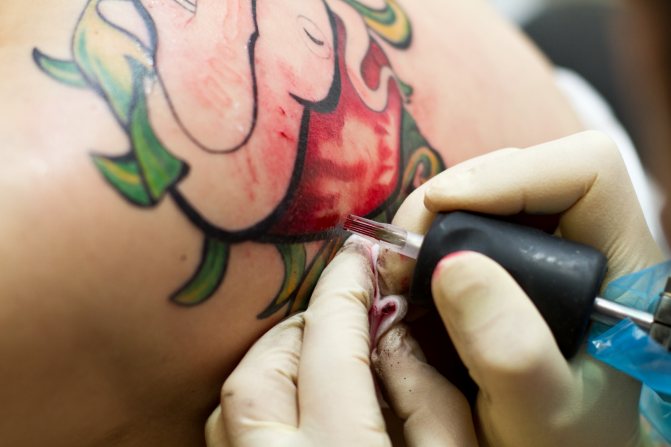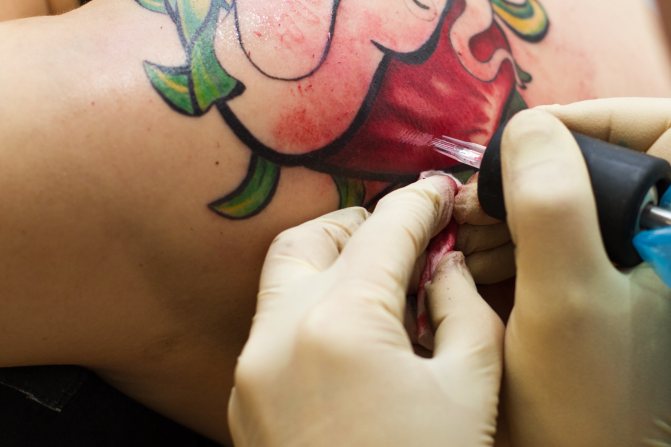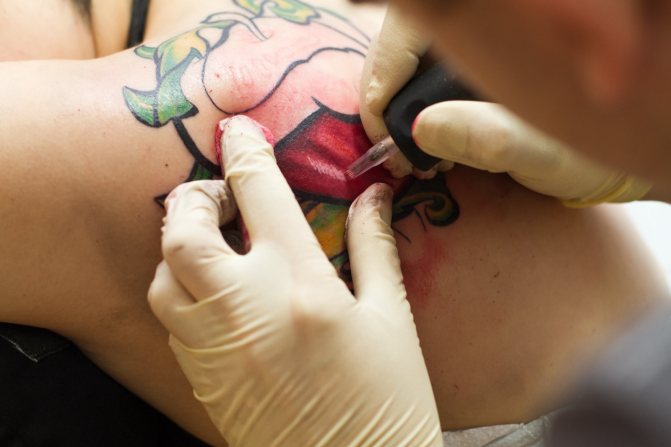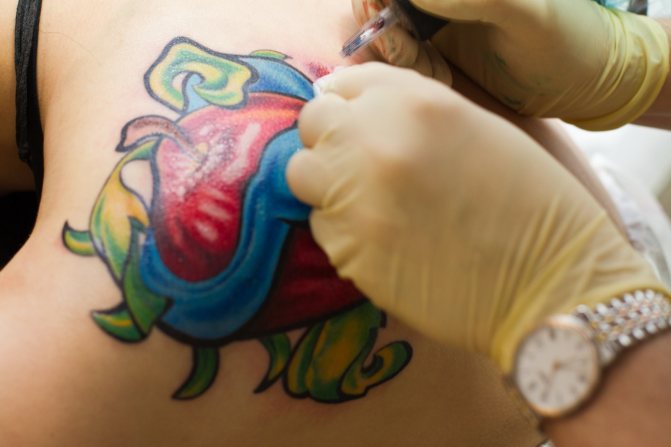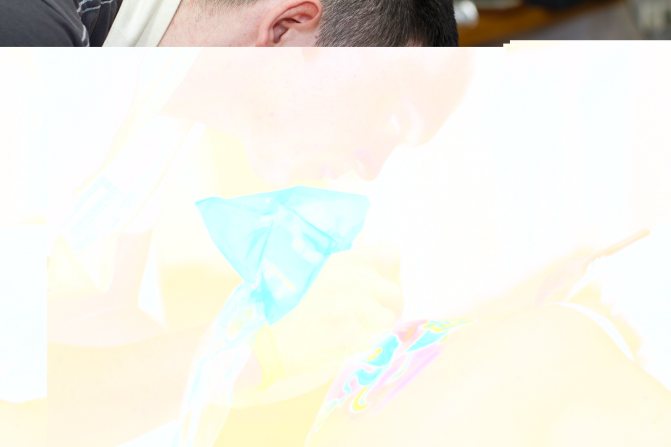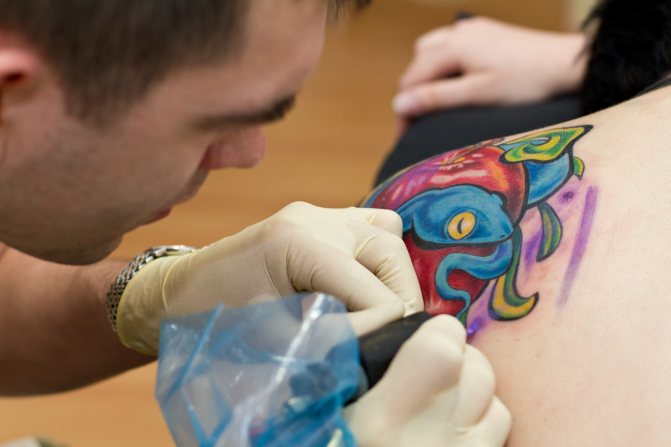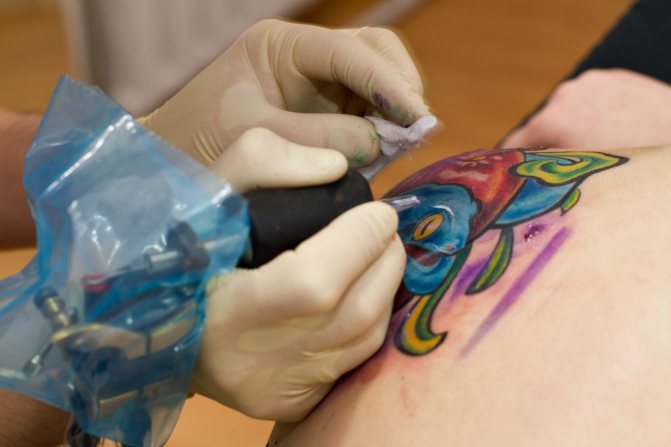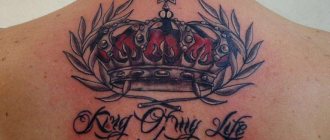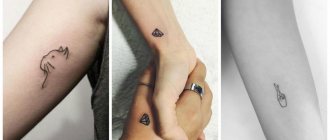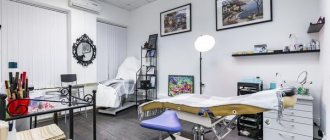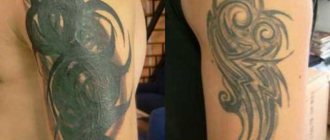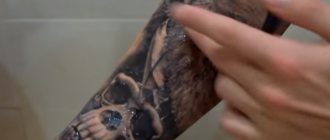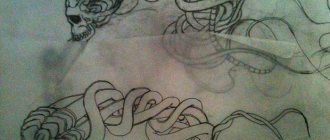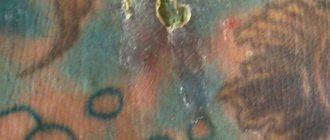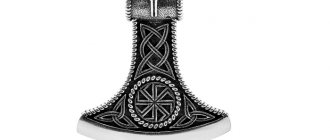What is a tattoo on the body?
Tattoo is a permanent or temporary (disappearing after a certain period of time) body image or design. The general procedure goes by the certain regulations and includes some obligatory stages, their observance affects the quality of the received result:
- selection of a drawing or image with a certain meaning or symbolism, stylistics of execution and general direction;
- Determination on what part of the body will be subsequently tattooed, how it will look and how open it will be;
- Consultation with the master to adjust the pattern and details of the image, the choice of colors and shades;
- Preparation of the body area for the upcoming process of tattooing and introduction of pigment under the skin in the selected area;
- Passing the process of healing the tattoo and the obligatory observance of general fundamentals of care for the tattooed area of the body.
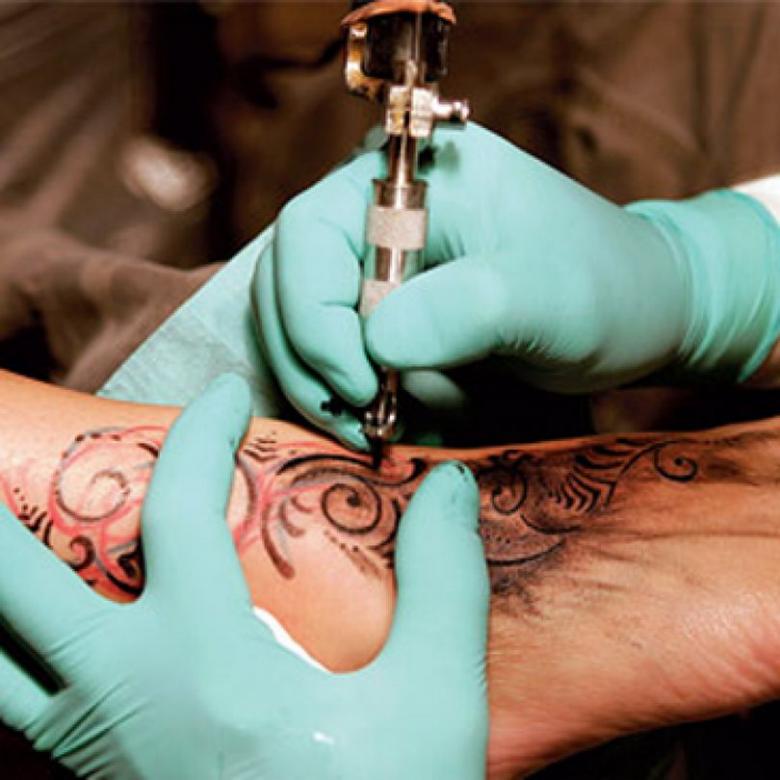
By itself, applying a tattoo is a definite process, which includes the use of special tools. The image is applied both in a specialized salon and at home, by piercing or traumatizing the epidermis and introducing the color pigment into the skin.
How many sessions will it take to get a tattoo?
The master can not accurately answer this question because the duration of tattooing depends not only on the size, complexity, detail of the image, but also on the skin type of the client, as well as his ability to endure painful or just unpleasant feelings for a long time.
Usually, complex large-size tattoos are done in several sessions. At the first session, the outline of the sketch is applied, at the second - fill in the figure in the primary color, at the third - the imposition of shadows, and finishing.
Beautiful, qualitatively made tattoo has a uniform tone, clear borders, retains its original appearance for a long time. But the positive characteristics of the body image depend not only on the skill of the tattooist, but also on the responsible attitude of the tattoo owner to the rules of care for it during the entire rehabilitation period.
Share this link:
Preparatory process before tattooing
In preparation for the main procedure includes the stages of selecting a pattern, which must necessarily meet a number of general criteria:
- Combine with the individual style and inner world of the owner, his hobbies and interests;
- be concise and have a definite meaning, without obvious ambiguity
- combine aesthetics and meaning regardless of the chosen location of application.
If you lack information about the meaning of the tattoo, you can consult with the master beforehand or find the necessary data on our site.
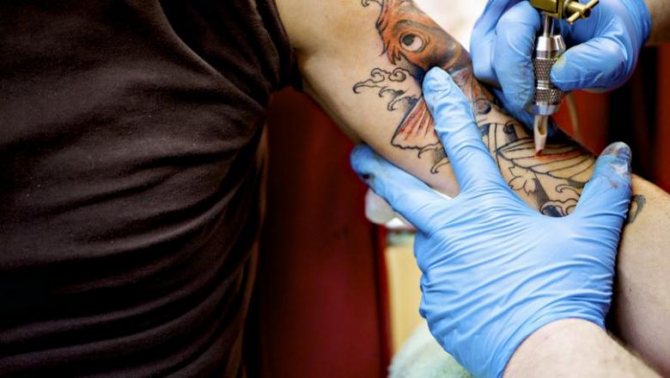

It is important: Do not forget that in most cases, the tattoo remains with its owner for a long time. That is why it is necessary to treat carefully the procedure of selecting a sketch, there are a variety of ideas for tattoos, which are sure to be useful to those who want to put the first image.
How to prepare?
Plan your day carefully to be in shape and in good spirits. The day before you should be able to get some sleep. It is desirable that the process of getting a tattoo is not preceded by important events. For example, you can fail to pass an exam or hold negotiations, that will spoil the mood completely.
Important! It is impossible to take alcohol at least a day before the procedure and even more so "for courage" on the same day. Ethyl alcohol increases blood pressure, dilates blood vessels, the blood circulation becomes more intensive and therefore the fresh pattern becomes pale, the healing process becomes harder and longer, and the process itself becomes more painful.
Girls are not recommended to get a tattoo during the period of critical days. During this period you usually do not feel and feel good, and the skin due to its physiological characteristics loses a little elasticity.
Choosing the location and adjusting the pattern
Of particular importance to the owner of the tattoo and the place in which the body image will be located and how it will be open. Carefully having thought over all nuances, it is possible to get acquainted with the photos of ready works and evaluate to what extent tattoos look advantageous on this or that part of the human body.
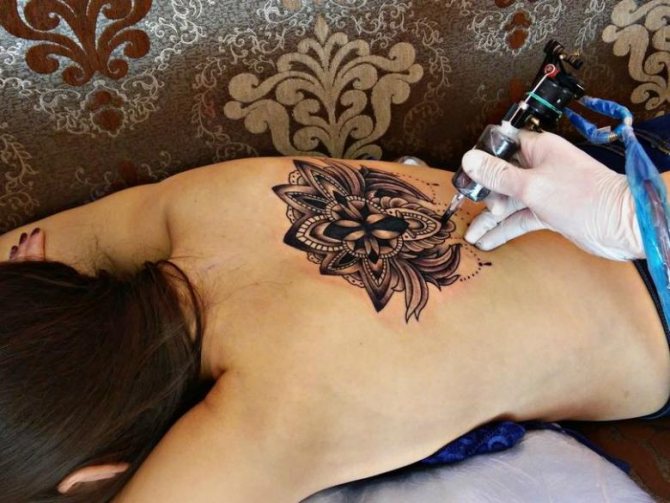

Before applying a tattoo it is better to communicate with the master and receive from him recommendations regarding the correction of the design. Any standard image can be supplemented with original elements, increasing or decreasing, achieving a perfect combination of aesthetics and harmony.
Aftercare
Tattoo care is necessary immediately after removing the bandage, which was imposed by the master. You should wash the injured skin with warm water, and gently blot with a paper towel or wait until it dries on its own. Then a thin layer of ointment or cream recommended by the specialist should be applied. Repeat the procedure several times a day until it is completely healed.
Throughout the healing period, you should avoid exposure to sunlight and, afterwards, use sunscreen with a high level of sun protection.
During regeneration will form crust, which in any case should not peel off prematurely, otherwise unwittingly, you can achieve the formation of scars.
Getting a tattoo - a very important moment, because the picture will remain for life. It should be chosen responsibly, and understanding how the process happens makes it not so scary and painful.
How to prepare for the tattoo
The preparatory stage involves not only the master in the salon, but also the person who chose the tattoo as a method of decoration. The main danger is blood thinning and decreased rate of clotting, which may increase the healing time of the tattoo:
- Avoiding medications that promote blood thinning (unless they are included in the mandatory course of treatment);
- Temporary cessation of alcoholic and alcohol-containing beverages, tattoo can not be done even with a hangover syndrome.
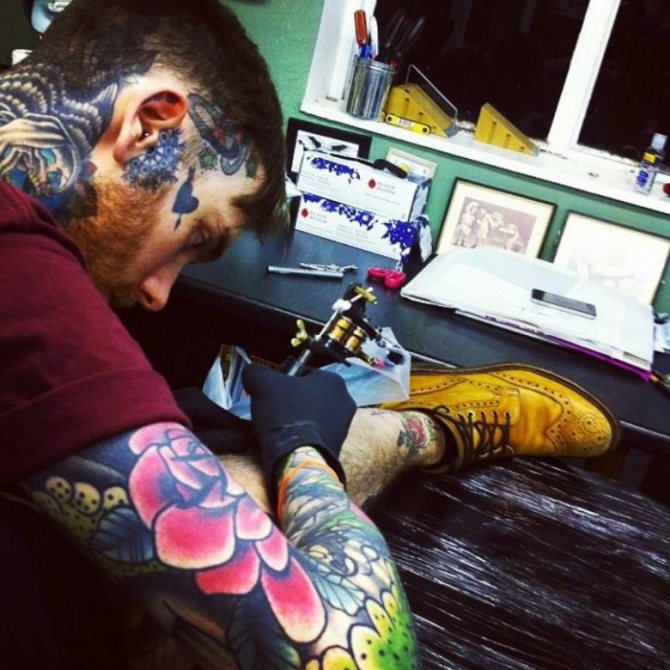

Do not forget that the body also requires preparation, but this step is taken by a professional master. In a good salon, specialists work exclusively with gloves, sterilize tools and needles, use high-quality pigments and treat skin with antiseptic before tattooing.
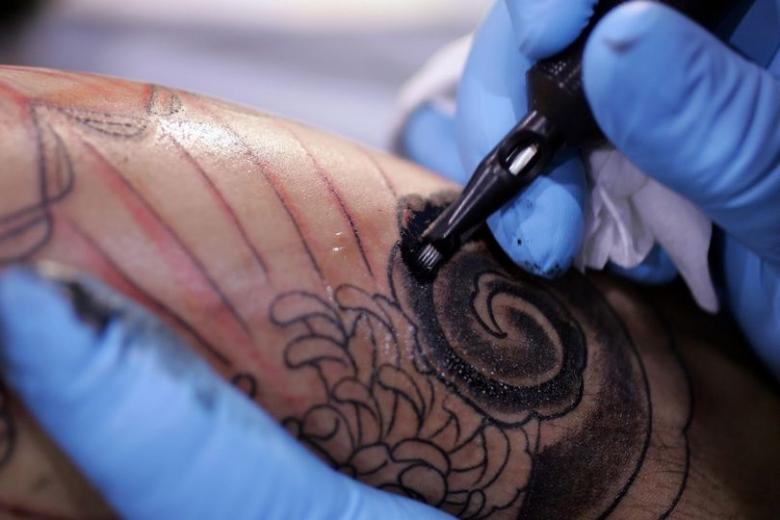

What size tattoos are better to do?
The size of the tattoo, of course, everyone can choose independently, but very small drawings are rarely good. The more details, colors and color transitions in the plot, the bigger should be the image. Too thin contours - less than 2 mm - do not hold well, over time they begin to blur. Tattoo size and price have a direct correlation.
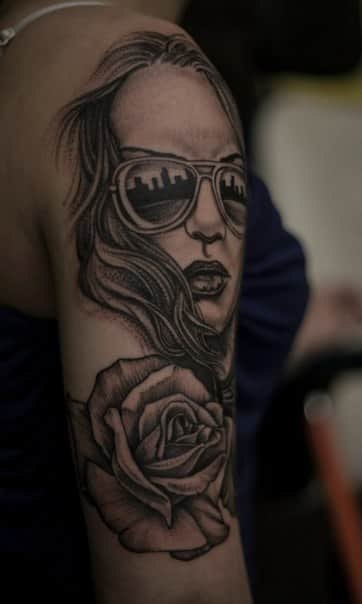

Procedure of tattooing and its main stages
After all the stages of preparation, begins the process of tattooing itself, which takes place according to a certain regulation and consists of several processes:
- drawing a sketch on the body (at a high level of professionalism of the master this process is not carried out);
- drawing the contour, it is hammered using one thin needle, piercing the skin;
- the needle contains a certain amount of pigment that remains in the dermis and stains a certain area.
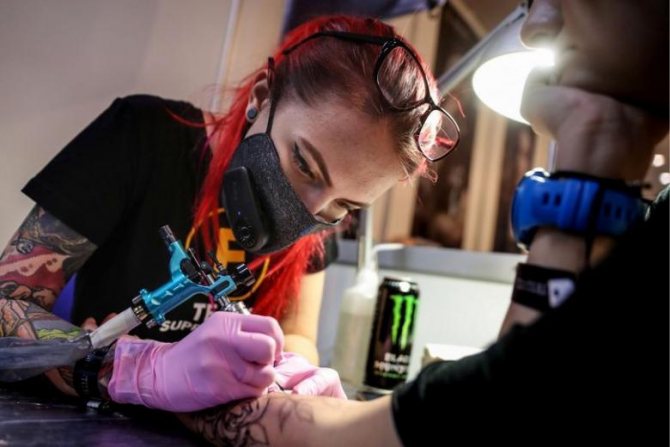

After the outline, shadows are drawn and colored areas are scored, and this method helps to get the highest quality drawing possible.
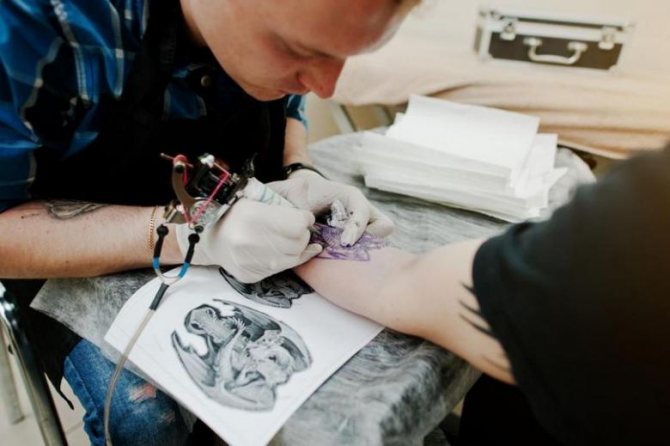

How it is done or the process of tattooing in detail
Many people wonder how the tattooing process is done. I gathered my strength, invited a great photographer, and decided to show you how it's done!
So, we are in a tattoo parlor. The client is ripe, the drawing is chosen, printed on the printer. We start the process of transferring the selected image on the client's body.
The master chosen and printed out drawing (today we are going to make a copy of tattoo master "Hottabych") lays down on the so called transfer paper (some kind of copy paper) and outlines the necessary contours and shadows. Then the excess paper is cut off, leaving only the desired pattern, making incisions around the edges, so that the picture when applied to the skin to repeat the curves of the body.
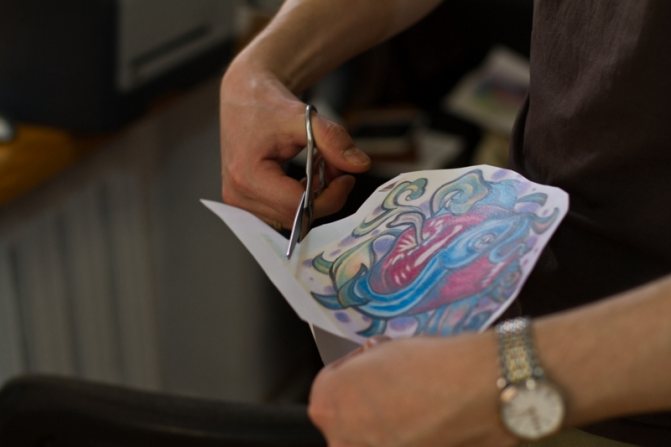

The client's skin is pre-treated with an alcohol napkin to remove dirt from its surface, thus we will protect the client from possible infection.
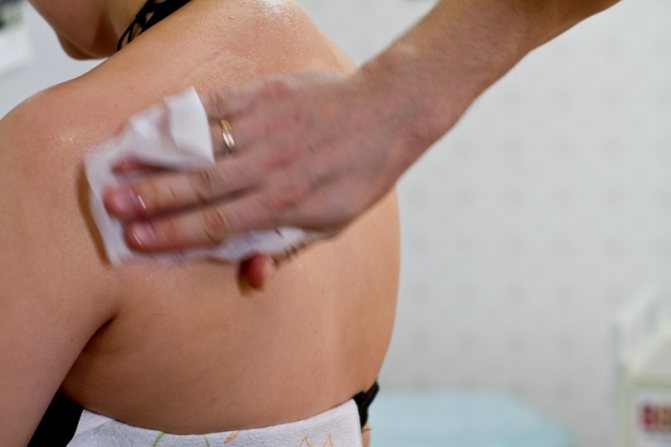

Apply a thin layer of green antibacterial soap solution to the client's skin, and sometimes use different products or gels for transferring.
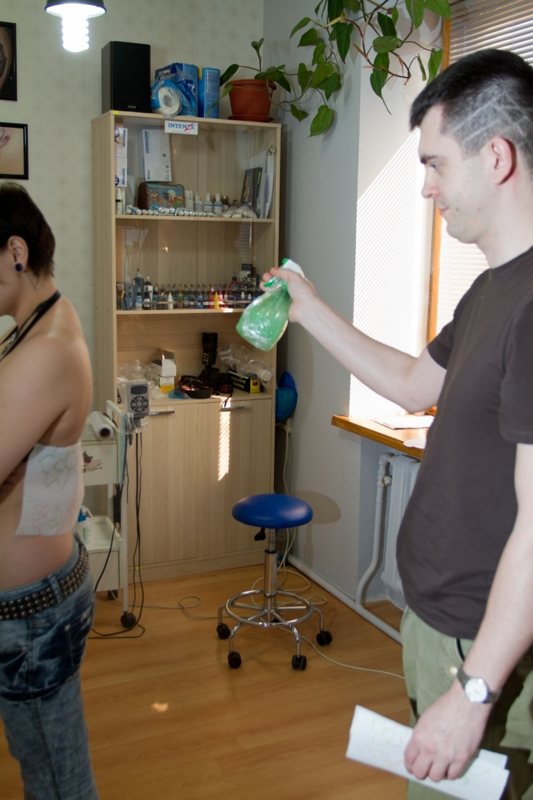

Place our blank with the contours on the skin, blot it with a clean cloth, wait a few seconds and gently remove it.
We begin to prepare the workplace for the session. All subjects and tools which are not exposed to sterilization, but which can be touched during work, are wrapped in film or covered with disposable polyethylene bags.
All necessary materials and tools are laid out on a workplace: cotton disks (for removal of excess paint), needles of necessary size, disposable spouts for paint, machines, paints and containers for it, a barrier protection for machines and a power cord. Vaseline is squeezed out of the tube, which is necessary for the master in his work. Vaseline is needed in the work so that the client's skin from constantly wiping off excess paint is less irritated, as well as Vaseline creates a film on the skin contributes to easier cleaning of the surface from the same excess paint, sometimes it can be used to secure the table surface container with paint, just squeeze a little "vase" on the table and you sink into it the cap for paint. In general, no matter how you look at it, Vaseline is a handy thing (although some masters work without it).
We take the needle spouts out of the sterile blister packs and attach them to the holder-grip.
We put on gloves, open the package with a needle and insert the needle into a disposable spout.
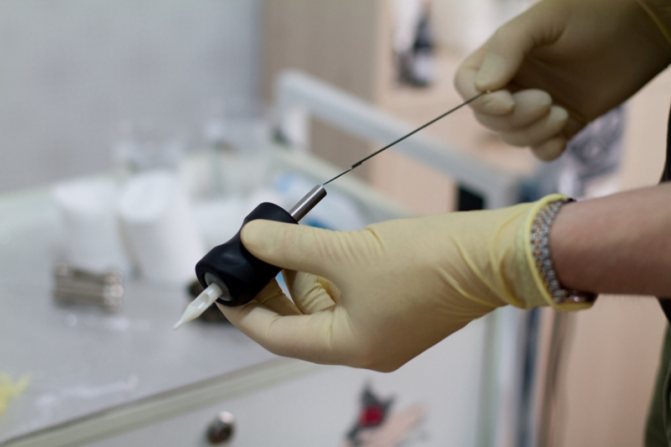

The machine is assembled and ready to work.
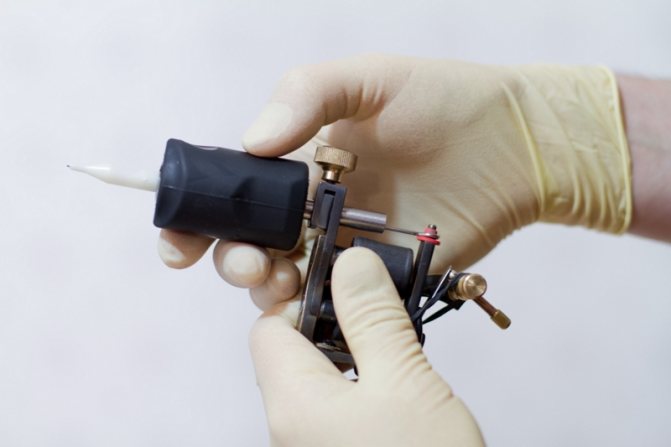

On the machine as well as on the power cord (clip-cord) put a disposable barrier protection, polyethylene bags of a special shape.
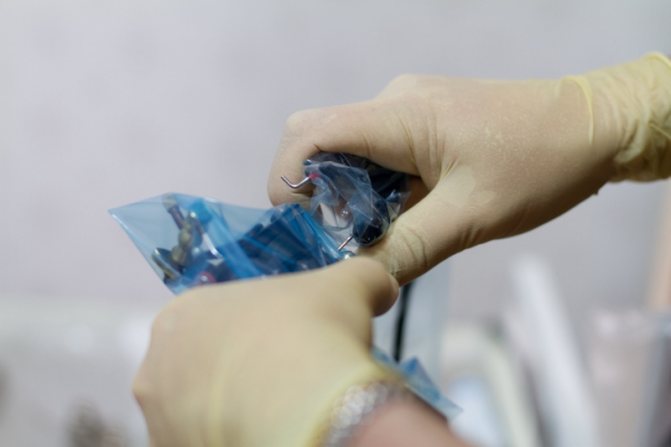

In special reservoirs-caps is poured the necessary amount of paint.
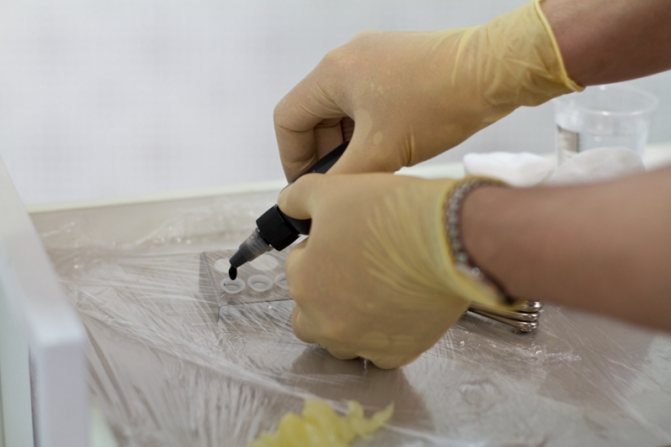

We start the process of tattooing. We smear a thin layer of petroleum jelly on the client's skin. We dip the needle in the paint and begin to apply the contours of our tattoo. In the process, the excess paint remaining on the body is removed with a cotton pad or tissue.


After drawing the contours of the figure proceed to paint over, vkrasivayu paint on more extensive areas than the contour lines. To do this, prepare the second machine, which differs from the first in that it is set up for painting, has a lower frequency of impact and a greater amplitude of motion of the needle. Repeat all the same steps as before. We unpack the needle (which, by the way, also differs from the contour, about types of needles you can read in article Equipment for tattooing) and the spout from the package-blister, we assemble the machine, we pack it in a barrier protection.
We paint it in.
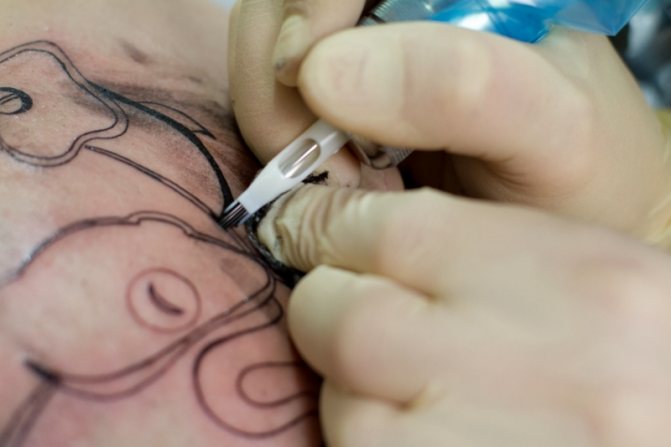

So. The contours are finished, where it is necessary to paint over with black. We are going to paint in color. How is it different from staining black? Yes, nothing, in principle, except that sometimes you have to mix paints to achieve the desired shade, as is done, for example, when working with canvas and oil.
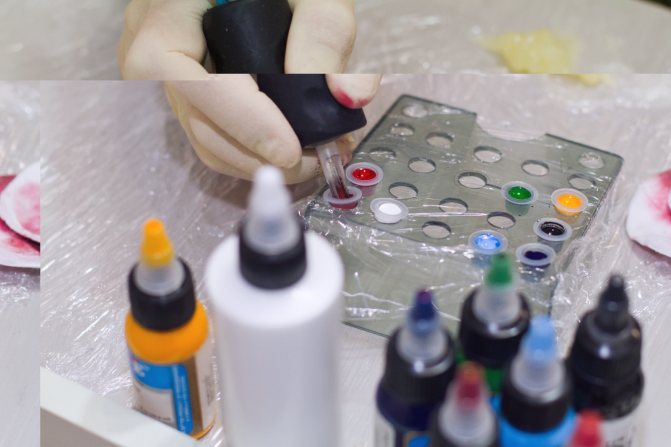

Colors are usually stained from darker to lighter. This is to ensure that when wiping the paint from the skin of the client there is no rubbing of darker colors in the areas painted with lighter colors, although that rule is not always satisfied. It is necessary to look at the skin of the client and if I see that the paint is strongly rubbed into the already painted surface, then we work very carefully and carefully. In this job, the client's skin was very good and there was no need to be careful.
First I painted the reds, then I dabbed the pinks on top of the reds and then started painting the blues. And, first of all, I dyed the light blue color, and only after that I added the darker blue.
During the work, the master must make a stern face like Beria's :)). Without this, the work will be unsuccessful.
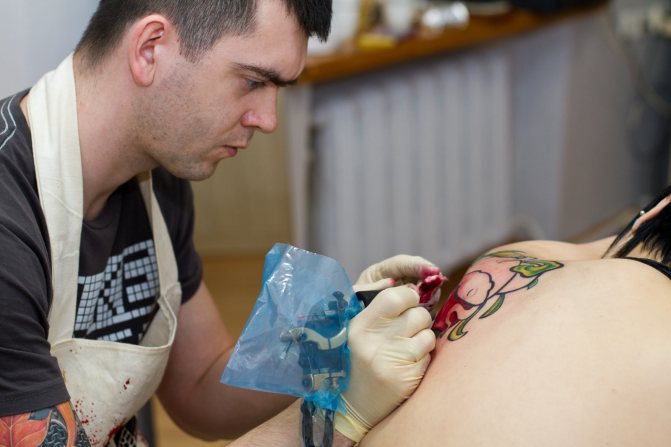

And, the finishing touches, here and there we put some white paint, here and there lavender ...
Again - "Beria"
